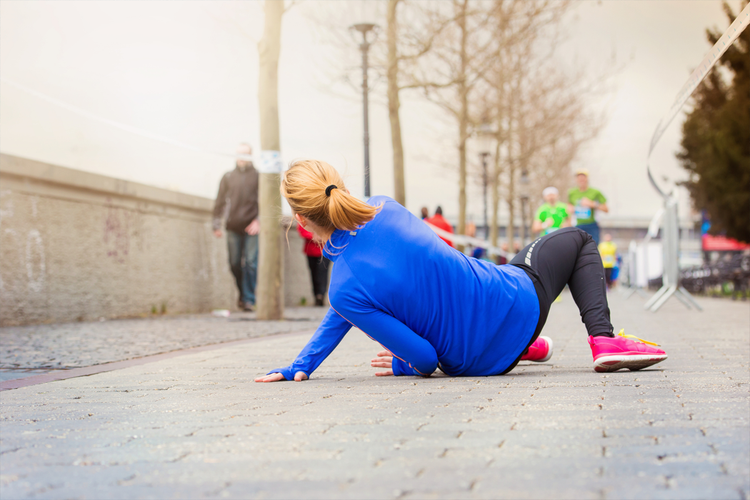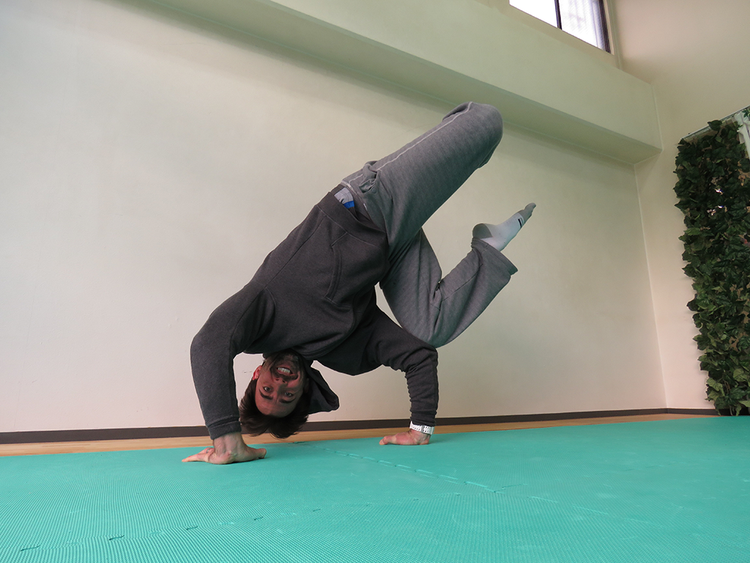Train Your Body to Handle Life’s Curveballs

Why you should be training your body to prepare for the unexpected with playful movements.
Almost everyone can agree that structure and stability are important in our lives. Feeling out of control and not knowing what will happen next is stressful and can cause a lot of anxiety. Routines for your work, home life, exercise and diet are great for consistency and working toward your goals. Consistent, steady effort over time leads to progress!
But we can’t plan our lives out perfectly—that’s just not how life goes. We need to be able to deal with unexpected events and not break down when our carefully laid plans are disrupted.
So it’s best if we find a way to have great routines and structure in our lives, while also developing ourselves to be able to handle whatever unforeseen circumstances crop up from time to time.
An excellent way to practice this is by building your body’s capacity for resilience. When you do this and see how your body adapts and thrives, it will transfer to other aspects of your life.
And luckily, the best way to build your body’s resilience is actually fun!
In this month’s column, I’ll share three key strategies for increasing your body’s resilience through playful movement.
Your body can adapt
Having a resilient body can change the severity of a potential or unavoidable injury. Things happen, that’s just the way it is. How your body handles those bumps in the road can mean the difference between being laid up for a couple of days or a couple of months.
Let’s say you’re walking down the street and it starts to rain unexpectedly. You break out in a run so you can find some shelter to wait out the storm. While running, you slip on a puddle and take a pretty bad spill.
A couple of things may happen now: One, you freak out immediately as you slip and the full weight of your body goes through your ankle, and you break it in a couple of places. Or two, because you’ve been working on your balance and agility, you stay calm, and even though you land pretty roughly, you are able to dissipate the force and limp away with a sprained ankle. It still hurts, but you don’t need to be carried away on a stretcher.
You’ve probably found yourself in situations like I just described hundreds of times in your life—many of those times without even realizing it. You don’t have to be clumsy or careless for these things to happen, they just do.
But having a resilient body that can absorb and react well to impact and stress can determine how quickly you bounce back from those injuries.
Now let’s talk about how to build that resilience.
Train your body
You may think that building your strength up as much as possible will bolster your resilience, and it’s true that being strong is definitely a lot better than being weak! There are a lot of benefits from consistent strength training, and you can’t argue against that. But strength is not exactly the same thing as resilience.
To distinguish them, we can simplify the definitions to state that strength is the ability to exert force, while resilience is the ability to withstand force.
And while strength is an important part of resilience, it’s not all there is to it. You also need flexibility through a wide range of motions, as well as body control and awareness.
Which is why, to build resilience, it’s important to move your body in a variety of ways, thus training it to withstand force in various ranges of motion. When it comes to traumatic injuries, they often occur in odd positions that you don’t encounter in standard gym exercises.
So how do you train for positions that are by definition unexpected or unusual?
The answer is playfulness. By exploring new movement patterns and positions outside of your normal, everyday actions, you introduce variability into your practice, which gets your body and brain more familiar with a much wider range of positions.
If you want to teach your body to handle a variety of movement situations with grace and skill, you have to be willing to confront the unknown in your training. Playing at the appropriate level for you is how we systematically integrate novel stimuli—the unknown and unexpected—into our training in a safe and effective way.

Three fun and effective strategies
If injury happens in unusual positions, and play takes your body into new positions, then why wouldn’t you get injured while playing around?
Doing almost any physical activity without the proper control and attention can lead to injury. But playful movement shouldn’t be any more dangerous than your usual training.
Here are three key strategies to safely expand your body’s resilience through playful movement.
- Play at your own level
Play is the ability to improvise and introduce variability into your movement practice at your current level of skill. The key is finding the sweet spot:
- Too high of a level and you will struggle just to do the move, let alone all of its various permutations.
- Too low of a level and it’ll be too easy to do, and won’t be as fun or useful.
The sweet spot occurs with movements you can do well, but at a level where play is just challenging enough to be invigorating.
It would not be the best idea for me to move right into higher levels without the accompanying strength and flexibility to do so safely. It’d just be overwhelming, and possibly even dangerous.
Music is a great analogy for this concept. A great jazz musician can playfully tumble through chord and tempo changes, deconstructing and reconstructing melodies on the fly—and it’s beautiful. But if an untrained person tried the same thing, it’s just noise.
A beginning level of musical play might be linking a new chord with the ones we already know or coming up with different patterns when playing our scales, yet it’s still play. It’s just at a level that matches our skills.
An example of how this can be applied to movement is with the frogger exercise.
https://www.youtube.com/watch?v=NRIIIL7KmSg
The basic movement of hopping forward with your hands and feet can move from short progressions with a controlled shifting of weight from your hands to your feet, to going right up into a handstand.
You may not be at the point where you can pop right into a handstand and mess around with going forward, backward and sideways into it from the frogger.
But that doesn’t mean you can’t play with it. There are myriad possibilities for playing with the movement at your own level. You can play with variations, such as how slow you can do the basic move. Or experiment with how far you can hop, how much weight you can put on one hand or the other, or turn it into a forward roll and so on.
It’s your level of play! Play with what you can do, and don’t feel like you have to wait until you are “advanced.”
- Work on the “in-between”
When we see people do impressive things with their bodies, either jumping and twisting to catch a football in the end zone or diving and returning a tennis ball back to the other player, what really grabs us is how smoothly a person can maneuver his or her body through space.
Big “tricks” like flips and jumps and outrageous feats of strength are great and definitely admirable, but it’s the ability to seamlessly link movements together that we instinctively know is a sign of a person who knows how to move his or her body.
Once you’ve gotten some basic movement skills down, such as cartwheels, the frogger move I demonstrated above and simple jumps, play with combining them together as smoothly as possible.
Find new options for getting from point A to point B with a couple of your “go-to” moves and as many different combinations and smooth transitions as you can. This is a great way to begin playing, and I bet you’ll surprise yourself with the new things you’ll discover.
https://www.youtube.com/watch?v=MnlTj6-LS-Y
- Remove expectations
Lastly, get rid of any preconceptions of what certain moves “should” look like or the “correct” way to go about doing them.
Within the concept of play, the only wrong thing to do is something that would hurt you (or others). Remove any ideas of what looks good or looks bad, and forget about your desire to do a “higher” progression of a skill.
Play with what you’ve got!
It’s very natural to be self-conscious about things we care about and have cultivated a passion for. We are all investing time in ourselves to be stronger, more mobile and more agile. But letting go of these expectations is a key to moving forward.
It’s ironic that our expectations and desires of how we “should be” can interfere with the actual process of getting there. And so it goes with the rest of our lives.
Playful movement is the key to building a resilient body and attitude
The strategies I’ve discussed will help you make playful movement a part of your practice. Through this work, you’ll condition your body to handle force in positions you’re likely unused to working on in standard gym training. And this will also help you to change your mindset. As you realize that your body can better handle unexpected situations, you’ll be able to apply that attitude to anything that life throws your way!
Photo credit: Halfpoint, Thinkstock; Courtesy of GMB